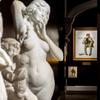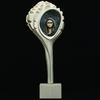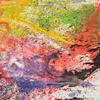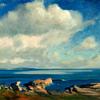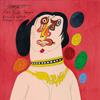The Pissarro Family: An Artistic Legacy
- October 07, 2019 08:27

Few families can match the rich artistic tradition of the Pissarro family; to this day, it remains one of the largest and most long-lasting artistic dynasties in the history of Western art. Beginning with the great French Impressionist Camille Pissarro, an astounding number of talented painters have sprung from the Pissarro lineage, which now boasts five generations of professional painters. A truly extraordinary artistic legacy, the Pissarro name seems to ensure proficiency with a paint brush at a young age. M.S. Rau has had the pleasure of offering works from not only Camille Pissarro, but many of his descendants. Read on to learn more about this fascinating family.
Camille Pissarro
As one of the original founders of the Impressionist movement, Camille Pissarro garnered a reputation as one of the most respected artists of the 19th century. With an artistic career that spanned more than 50 years, the revolutionary patriarch influenced the likes of Claude Monet, Paul Cézanne, Mary Cassatt and Vincent van Gogh with his ideals of portraying everyday life and always remaining true to the innate beauty of the natural world.
From the very beginning, Pissarro took on the role of teacher, always imparting his knowledge upon the close-knit Impressionists who looked to him as a guiding force. Cézanne once stated that he "never forgot the sympathy and understanding with which Pissarro encouraged him." This sentiment held strong for the most important pupils in his life: his children. His son Lucien described his father as a "splendid teacher, never imposing his personality on his pupil."

His Sons
Pissarro had five sons: Lucien, Georges, Félix, Ludovic-Rodolphe and Paul-Emile. To the dismay of his wife Julie, who was concerned about her children’s financial future, all of them followed in their father’s footsteps and took up art at an early age. Thus, Pissarro became the master of an informal art school within his own family.
Pissarro was firmly against sending his children to art school, advising them instead to study nature, along with the works of both contemporary artists and the Old Masters. Japanese prints, Gothic art and caricatures by artists such as Honoré Daumier were among the many works recommended by Pissarro to study. In order to avoid exerting too much influence over his sons, he ensured they were proficient in impressionist techniques, but then encouraged them to pursue their own distinctive styles.
He also urged them to adopt pseudonyms in lieu of the Pissarro family name. During his sons’ early careers, Pissarro was plagued by unfavorable reviews from critics and poor sales; he also wished to allow his sons a freedom of expression and independence apart from his established style. Thus for a period of time, Lucien took his mother’s maiden name, Vellay, while George became Manzana, Félix became Jean Roch, Ludovic-Rodolphe abbreviated his name to Ludovic-Rodo or Rodo and Paul-Emile became Paulémile.
Paul-Emile and Lucien were the artists who most closely resembled the style and subject matter of their father. Both were painters of meditative landscapes; and while Lucien remained devoted to Impressionism throughout his life, Paul-Emile abandoned the touches divisées, or “divided touch,” of Impressionism in order to mix his colors on the palette.

Later Generations
Paul-Emile’s oldest child, Hugues Claude, carried on the family tradition of artistry. Born in 1935, he was named for his godfather, Claude Monet. As had become the Pissarro family tradition, Hugues Claude was initially taught by his father, though he later studied at the École du Musée du Louvre and the École Normale Supérieur. He exhibited his first work at the young age of 14.
While today he is renowned for his work in the impressionist style, H. Claude experimented with a variety of different contemporary movements during his early career, including Abstract, Minimalist and Conceptual Art. Eventually, however, he returned to the impressionist style later in life; these works, for which he became known as petit Claude, have been exhibited around the world since 1985.
As the great-granddaughter of Camille Pissarro, Lélia represents the fourth generation of this family of artists. Born in Paris in 1963, her early years were spent in Normandy with her grandparents, Paul-Emile and his wife, Yvonne. She studied with both her grandfather and her father, Hugues Claude, and later attended art school in Tours. Her first work was sold to Wally Findlay, a New York art dealer, when she was just five years old, and she exhibited her first painting at the age of 11.
At the age of 21, she began to teach art in Paris, a practice which she continued when she moved to London in 1988. Her works reflect the tradition of the Pissarro family and its progenitor, taking as her subject scenes of her native France as well as the English countryside rendered in an impressionist style.
A fifth generation is on the horizon as Lélia’s daughter recently entered into the artistic fold. Born in 1991, she has already held solo exhibitions in both New York and Texas; her work has also been exhibited in San Francisco and London.
A Lasting Legacy
The father of both an artistic movement and dynasty, the art of Camille Pissarro lives on in his own masterpieces and those of his children, grandchildren and great-grandchildren, who have built upon the guiding principles of modern art that have been passed down to them for over 150 years.
To learn more about and view all of M.S. Rau’s paintings by the Pissarro family, click here.
About M.S. Rau:
M.S. Rau has spent over 100 years earning the trust of discerning collectors worldwide. Located in the heart of New Orleans’ historic French Quarter, our peerless showroom houses one of the world’s most extensive and stunning collections of museum-quality fine art by artists such as Claude Monet and William Bouguereau, 18th- and 19th-century antiques and breathtaking jewelry, including rare colored diamonds.

